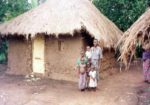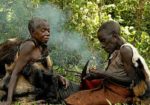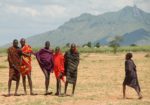The Kumam people (also known as Ikumama, Ikokolemu and Akokolemu) are a Ugandan ethnic group of about 150,000 living mainly in Kaberamaido district as well as the western areas of Teso sub-region, and the south-east of Lango sub-region.
They speak a Luo language similar to the language spoken by the Lango, with some Iteso vocabulary. Kumam traditions say are part of the Iteso people. They probably lost their Eastern Nilotic Ateker language and took up the Western Nilotic Luo spoken by their Lango and Acholi neighbours – due to prolonged contact and intermarriages.
History of the Kumam people
The Kumam were originally a Plains Nilote people, related to the Teso and Karamojong. They were affected by the migration of the Lwoo Nilotic people group from the Sudan beginning in the 1400s. As these Lwoo-speaking River-Lake Nilotes pressed in, the Kumam were one of the groups who gradually accepted the Lwoo speech.
Historians claim that they migrated from the north-eastern part of Ethiopia about the 16th century AD. They assert that their language derived from the Ateso dialect (Dum) and they later on adapted the Luo dialect (Lwo), when they came in contact with the Luo peoples from the area around Mt. Otukei and Wila in today’s Karamoja territory.
The political set up of Kumam people
They had a loose political structure under clan leaders known as wegi Atekerin. Other people of importance in the society were wegi ikodeta Cel (leaders of dancing groups), and leaders of Asonya homes, wegi Cel. The wegi Cel were in most cases Dogolan or Odonge ikekoros (heads of part of a clan descending from one man). These clan leaders were responsible for the maintenance of law and order as well as general administration. They arbitrated in matters of politics and social affairs.
Traditional marriage among Kumam people
Previously, the parents would arrange marriages for their children. Girls of tender age would be betrothed to boys. In effect, the young girl would become wife to a respective boy but she would wait to be officially handed over when she came of age. In some cases, the young girls so betrothed would be taken to the boy’s home to grow up there. When she came of age, a ceremony would be organized to formalize the relationship.
With time however the system changed. A boy would look for a girl and without the consent of the parents sneak with her to his home at night.
After a week or so, the girl’s relatives would begin to look for her. Obviously they had some prior knowledge of her whereabouts. On discovery, a fine would be exacted form the boy. Arrangements would be made to settle the bridewealth and the marriage would be formalized.
If the girl’s parents did not trace her where about, it was normal for her to go home and tell them what had happened other. Then due arrangements would be made to obtain the fine and bride wealth from her husband. The normal procedure was that the girl’s relatives would go to the boy’s home where the bride wealth would be negotiated.The cows could be taken that same day. It ranged between twelve to fifteen heads of cattle. The exact number depended on how hard working the girl was.
Economy setup of Kumam people
The Kumam were originally pastoralists, They reared cattle, sheep, goats and chickens. Today they are partly pastoral and partly agricultural. Their staple food crops are kal (millet), bel (sorghum), kat (potatoes) with peas and beans as a common sauce. Land was communally owned by a clan. Any member of the clan was fully entitled to use it. Women and children did not own land.
The women owned utensils which included agulu (big pots), tabo (small pots), itany (plates made from clay) as well as a variety of baskets and mats. The Kumam people were prone to the influence of the Luo. The Kumam language has a high percentage of Lwo words













1 Comment
Simx Orimo, 2025-04-26 at 7:18 PM
Thank you so much for this very interesting and useful info. Kindly include other bits and pieces such as Wiiro mon, Oomo nyuka, Iworon, etc. Otherwise you indeed did a wonderful job. Thank you again.